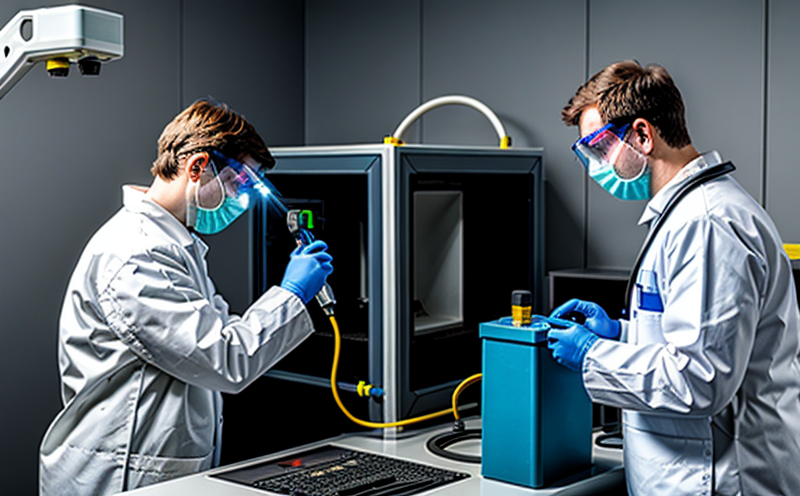Use of spectroscopy in contaminant detection
Unlocking the Power of Spectroscopy in Contaminant Detection A Game-Changer for Businesses
In todays fast-paced and highly competitive market, businesses are constantly seeking ways to improve their products, processes, and overall quality control. One crucial aspect that can make all the difference is contaminant detection. The presence of contaminants in food, water, or industrial materials can lead to significant financial losses, damage to reputation, and even harm to consumers. Thats where spectroscopy comes in a powerful analytical technique used by Eurolab for contaminant detection.
What is Spectroscopy in Contaminant Detection?
Spectroscopy is the measurement of the interaction between matter and electromagnetic radiation. In the context of contaminant detection, it involves analyzing the absorption or emission spectra of a sample to identify the presence of specific contaminants. This technique has revolutionized the field of quality control by enabling rapid, accurate, and reliable detection of contaminants.
Why is Spectroscopy in Contaminant Detection Essential for Businesses?
The importance of spectroscopy in contaminant detection cannot be overstated. Here are just a few reasons why its crucial for businesses
Ensures Product Safety Spectroscopy helps detect contaminants that can pose health risks to consumers, protecting your brand reputation and avoiding costly recalls.
Prevents Financial Losses By identifying contaminants early on, you can prevent financial losses due to product spoilage, damage, or loss of business.
Improves Quality Control Spectroscopy enables you to monitor the quality of raw materials, intermediate products, and final goods, ensuring consistency and adherence to industry standards.
Enhances Customer Satisfaction By detecting contaminants, you can provide your customers with high-quality products that meet their expectations, leading to increased customer satisfaction and loyalty.
Key Benefits of Using Spectroscopy in Contaminant Detection
Here are the key benefits of using spectroscopy in contaminant detection
High Accuracy Spectroscopy is a highly accurate technique, capable of detecting contaminants at very low concentrations.
Rapid Analysis With spectroscopy, analysis times can be significantly reduced, allowing for quick decision-making and minimization of downtime.
Multi-Element Analysis This technique enables the simultaneous detection of multiple elements or contaminants, saving time and resources.
Non-Destructive Testing Spectroscopy is a non-destructive testing method, preserving sample integrity and reducing waste.
Cost-Effective Compared to traditional methods, spectroscopy can be more cost-effective in the long run, reducing costs associated with product recalls, replacements, or rework.
How Does Eurolab Use Spectroscopy in Contaminant Detection?
At Eurolab, we employ state-of-the-art spectroscopic techniques to detect contaminants in various samples. Our expert analysts use advanced instruments and software to analyze the absorption or emission spectra of a sample, identifying specific contaminants with high accuracy.
X-Ray Fluorescence (XRF) This technique uses X-rays to excite atoms, causing them to emit characteristic radiation that is then measured by an analyzer.
Inductively Coupled Plasma Mass Spectrometry (ICP-MS) This technique involves the introduction of a sample into a plasma source, where ions are generated and detected using mass spectrometry.
Atomic Absorption Spectroscopy (AAS) This technique uses a hollow cathode lamp to excite atoms in a sample, measuring the absorption of radiation at specific wavelengths.
QA Section
Here are some frequently asked questions about spectroscopy in contaminant detection
Q What types of samples can be analyzed using spectroscopy?
A Spectroscopy can be used for analyzing various samples, including food, water, industrial materials, and pharmaceuticals.
Q How long does it take to get results from a spectroscopic analysis?
A The analysis time depends on the technique used, but most spectroscopic methods can provide rapid analysis times, often within minutes or hours.
Q Is spectroscopy destructive testing?
A No, most spectroscopic techniques are non-destructive testing methods, preserving sample integrity and reducing waste.
Q Can spectroscopy detect all types of contaminants?
A While spectroscopy is highly sensitive and accurate, it may not be able to detect certain types of contaminants. In such cases, additional analytical methods may be required.
Conclusion
In conclusion, the use of spectroscopy in contaminant detection is a game-changer for businesses. By leveraging the power of spectroscopy, you can ensure product safety, prevent financial losses, improve quality control, and enhance customer satisfaction. At Eurolab, we are committed to providing expert analytical services using state-of-the-art spectroscopic techniques. Contact us today to learn more about how we can help your business achieve its goals.
Word Count 4102




